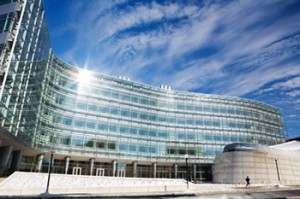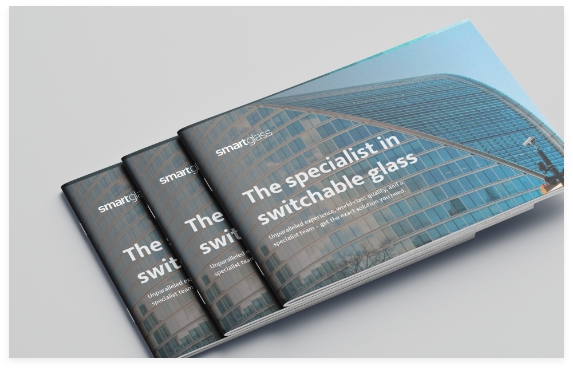Download Smartglass Brochure
spaces that adapt to users’ needs at the flick of a switch.
Industry professionals say that in the future, Dubai will require significantly more smart buildings if it is to successfully reduce energy usage and enhance sustainability in the region.

In an interview with Construction Week, Hyder’s head of electrical engineering in the UAE, Matt Jones, said, “It’s a great leap forward in the user experience of buildings, abilities of facilities managers to understand and monitor their buildings and for energy usage to be reduced.
“This is a natural progression of building design as technology progresses and in a field where there has been very little change in many years. This technology paves the way for an improved future for the complete built environment.”
Other experts agreed, alluding to a new responsibility on developers, and an emirate-wide sustainability drive, prioritised in 2009 by Dubai’s leader Sheikh Mohammed bin Rashid Al Maktoum.
“Developers have a duty of care to ensure buildings minimise energy consumption once they are operational. They need to recognise the importance of controlling energy usage and energy costs within a building in response to the escalating energy prices and the ‘green’ movement to reduce carbon emissions,” said the Sunland Group’s COO David Brown.
Nathan Hones, the general manager of Stride Treglown architects Abu Dhabi, added, “Building Management Systems are crucial to the effective operation and efficient running of buildings at various times of the day.
“With Sheikh Mohammed’s mandate that all buildings must be green back in 2009, this has put the focus firmly on developers and owners to deliver buildings that are socially responsible and sustainable.”
In Europe, where smart buildings were first conceptualised, it is still the case that only 10% of buildings have efficient and effective controls.
In the Middle East, there continues to be very few smart buildings, but contractors and suppliers say that number is increasing, with projects like Le Rêve in Dubai, the Yas Marina hotel in Abu Dhabi and the Waseel Tower and Mövenpick in Riyadh all completed in recent years.
Inefficient windows are responsible for thousands of dollars in energy loss for both residential and commercial property owners. But new smart glass technology could allow windows to control sunlight and heat, drastically reducing energy costs across the country.
…you wake up in the dark hours of an early winter morning, but instead of flipping on the lights, you flip a switch that sends a tiny electric current through the electrochromatic glass of your windows. The windows instantly turn from dark to transparent, allowing the warmth and natural light of the sun to flood your home.
Now imagine this: you’re the office manager of a company in scorching hot Phoenix, Arizona. Instead of cranking up the air conditioning when the sun warms the windows of your office to over 100 degrees, you simply flip a switch. Instantly the smart glass windows of your office building become tinted, blocking out the sun and helping to maintain a cooler temperature inside.
Now, you might be wondering how installing electrified windows is going to help buildings reduce their energy consumption, rather than increase it. Ultra-efficiency is the answer: Experts say that powering 2,000 square feet of the color-changing glass—the equivalent of more than 100 windows—would require less power than illuminating a 60-watt light bulb.
SPD-SmartGlass by SmartGlass Interational can be manually or automatically “tuned” to precisely control the amount of light, glare and heat passing through a window. While glass is often a favored product for use in building facades; glare, solar heat gain and UV exposure are problematic and can often make the use of glass impractical resulting in the need to invest in expensive solar shading devices.
Glass facades using patented SPD solar control technology reduce the need for air conditioning during the summer months and heating during winter. The ability to instantly switch the glass to maximize daylight when it’s really needed and to provide controllable solar shading during peak light conditions is valuable and unique to SPD SmartGlass. All SPD SmartGlass panels are bespoke manufactured using a lamination process which encapsulates a SPD “Suspended Particle Device” film between 2 or more glass sheets.
So how does it actually work? When the power supply is switched on, the rod shaped suspended particle molecules align, light passes through and the SPD SmartGlass panel clears. SPD SmartGlass protect from damaging UV when on or off.
When the power supply is switched off the rod shaped suspended particle molecules are randomly oriented blocking light and the SPD SmartGlass becomes dark blocking up to 99.4% of light.
The Saudi Arabian government has taken the drive towards more sustainable construction to heart with the completion of its first Smart Building that will act as the headquarters of the ministry of higher education in Riyadh.

Wherever you are in the world one of our team will be in touch to advise on the best smart glass solution for your needs.